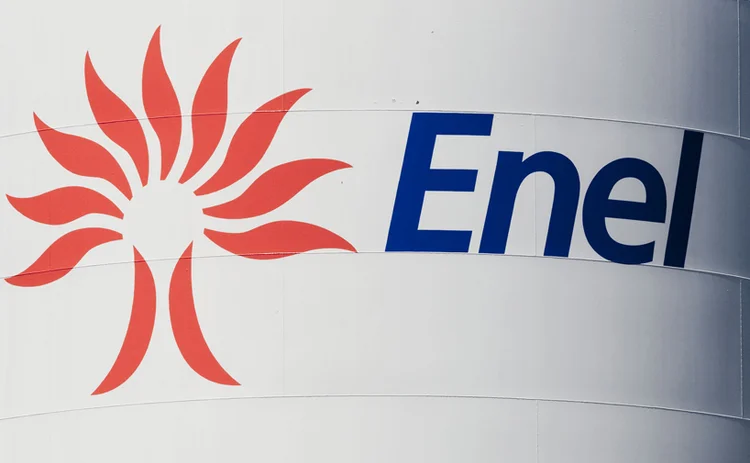
Counterparty risk concerns drive Enel to bond market
The head of group finance at Italian energy firm Enel explains why a focus on counterparty risk has led it to increase its activity in the bond market.

Funding capital projects and acquisitions for Enel, Italy’s largest electricity generator and distributor, has been a challenge since the start of the financial crisis. Concerns about the strength of Europe’s banks haven’t made life any easier for the company’s head of group finance, Alessandro Canta.
European supervisors tried to restore faith in the continent’s banks in July this year by publishing the results of a European Union-wide stress-test exercise. However, Enel has not changed its approach on the basis of the results, says Canta: “In general, we do not take the stress-test results into account in dealing with banks.”
All Italy’s major banks passed the stress test, but Canta is still taking measures to insulate Enel from the risk of a bank failure. The first stage, he says, is to cut down on the proportion of funding obtained from banks. “In common with other corporates, Enel is basing its strategy on progressively replacing bank loans with bond issuances,” he says.
Over the six months to June 30, the amount of long-term loans outstanding fell from €21.6 billion to €17.7 billion, while long-term bonds increased from €31.9 billion to €35.9 billion. A similar, although less pronounced, trend emerged in short-term debt as well.
The company launched a multi-currency bond issue in September 2009, raising €10 billion, and followed this in February 2010 with a €3 billion retail bond issue. And although it established an €8 billion credit line with a syndicate of banks to finance its purchase of Madrid-based utility company Endesa in 2009, it subsequently announced it would increase its bond issuance programme to cover the cost of the acquisition.
But the 2009 multi-currency bond wasn’t entirely independent of the banks: it involved derivatives to hedge the currency and interest rate risks arising from the issuance. To mitigate counterparty risk and reduce costs, Enel decided to use credit support annex (CSA) agreements for the first time.
“Following the collapse of Lehman Brothers, we have wondered a lot about the creditworthiness of our bank counterparties,” Canta explains. “Our main goal was to defend our credit from a default. The benefit of a CSA is that it allows us to deal with derivatives without a credit charge, so we can minimise costs.”
A year on, Canta is convinced of the wisdom of using CSAs. “We now have 10 CSAs in place, and we have two more counterparties that are going to join them. According to our CSA agreements, all new interest rate derivatives deals with current CSA counterparties will be covered by subsequent collateral calls,” he says.
Counterparty politics
Heightened vigilance towards bank counterparties is another tactic Canta favours. Enel’s group-level risk management office, set up in 2009, includes a permanent counterparty risk unit, concentrating on the firm’s interactions with banks. “We principally look at credit default swap spreads, at credit ratings, at the credit standing of the banks and our relationship with them in general,” Canta explains.
But although Italian banks have significant sovereign risk exposure through their holdings of Italian government bonds, Canta says the Eurozone sovereign debt crisis earlier this year “did not change our mind on Italian or Spanish banks; they are still our principal banks for funding, so there is no change in perception”.
And Enel is far from cutting its ties to the sector: in April it replaced an existing €5 billion working capital credit line with one twice the size, although it has not drawn on it so far (and emphasises that this is separate from its debt refinancing programme).
Only users who have a paid subscription or are part of a corporate subscription are able to print or copy content.
To access these options, along with all other subscription benefits, please contact info@risk.net or view our subscription options here: http://subscriptions.risk.net/subscribe
You are currently unable to print this content. Please contact info@risk.net to find out more.
You are currently unable to copy this content. Please contact info@risk.net to find out more.
Copyright Infopro Digital Limited. All rights reserved.
You may share this content using our article tools. Printing this content is for the sole use of the Authorised User (named subscriber), as outlined in our terms and conditions - https://www.infopro-insight.com/terms-conditions/insight-subscriptions/
If you would like to purchase additional rights please email info@risk.net
Copyright Infopro Digital Limited. All rights reserved.
You may share this content using our article tools. Copying this content is for the sole use of the Authorised User (named subscriber), as outlined in our terms and conditions - https://www.infopro-insight.com/terms-conditions/insight-subscriptions/
If you would like to purchase additional rights please email info@risk.net
More on Credit risk
Finding the investment management ‘one analytics view’
This paper outlines the benefits accruing to buy-side practitioners on the back of generating a single analytics view of their risk and performance metrics across funds, regions and asset classes
Revolutionising liquidity management: harnessing operational intelligence for real‑time insights and risk mitigation
Pierre Gaudin, head of business development at ActiveViam, explains the importance of fast, in-memory data analysis functions in allowing firms to consistently provide senior decision-makers with actionable insights
Sec-lending haircuts and indemnification pricing
A pricing method for borrowed securities that includes haircut and indemnification is introduced
XVAs and counterparty credit risk for energy markets: addressing the challenges and unravelling complexity
In this webinar, a panel of quantitative researchers and risk practitioners from banks, energy firms and a software vendor discuss practical challenges in the modelling and risk management of XVAs and CCR in the energy markets, and how to overcome them.
Credit risk & modelling – Special report 2021
This Risk special report provides an insight on the challenges facing banks in measuring and mitigating credit risk in the current environment, and the strategies they are deploying to adapt to a more stringent regulatory approach.
The wild world of credit models
The Covid-19 pandemic has induced a kind of schizophrenia in loan-loss models. When the pandemic hit, banks overprovisioned for credit losses on the assumption that the economy would head south. But when government stimulus packages put wads of cash in…
Driving greater value in credit risk and modelling
A forum of industry leaders discusses the challenges facing banks in measuring and mitigating credit risk in the current environment, and strategies to adapt to a more stringent regulatory framework in the future
Accelerating the evolution of credit decisioning and modelling
Anthony Mancuso, director, global head of risk modelling and decisioning at SAS, explains the importance of developing a fully capable credit modelling lifecycle to empower non-specialist personnel, and offers insight into its own solutions to this end,…
Most read
- Top 10 operational risks for 2024
- Japanese megabanks shun internal models as FRTB bites
- Top 10 op risks: third parties stoke cyber risk







